iSphere
Paul Bourke
January 2007
Concept drawing for an immersive display consisting of a 360 degree
display surface horizontally and 120 degree vertically.
Top View
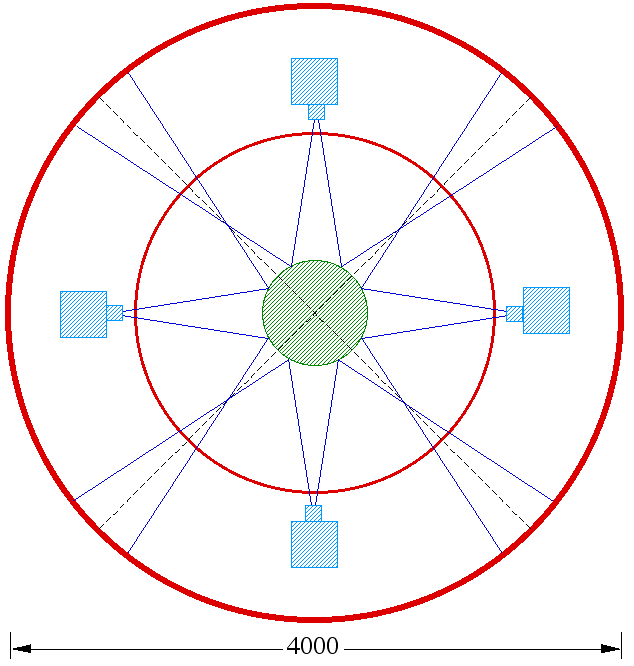
Side View
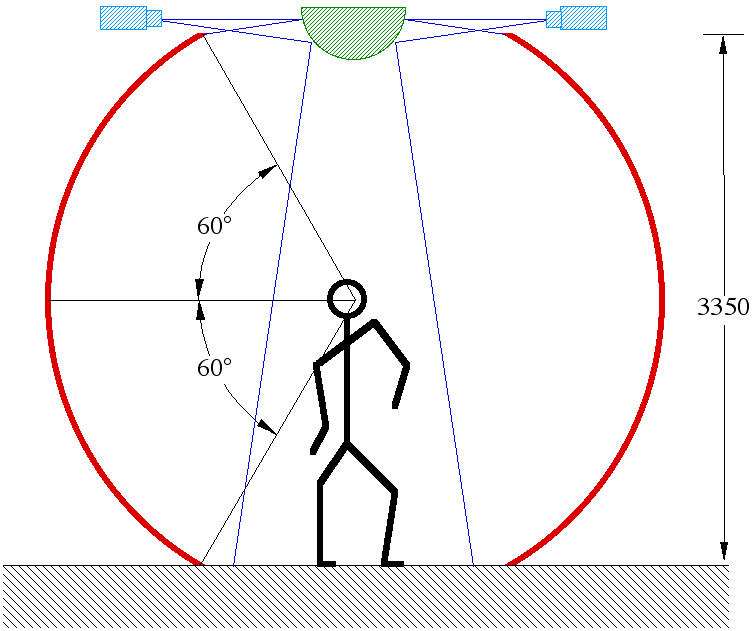
3D view
A 3D view with the same component colour coding is shown below, all the
components are to scale.
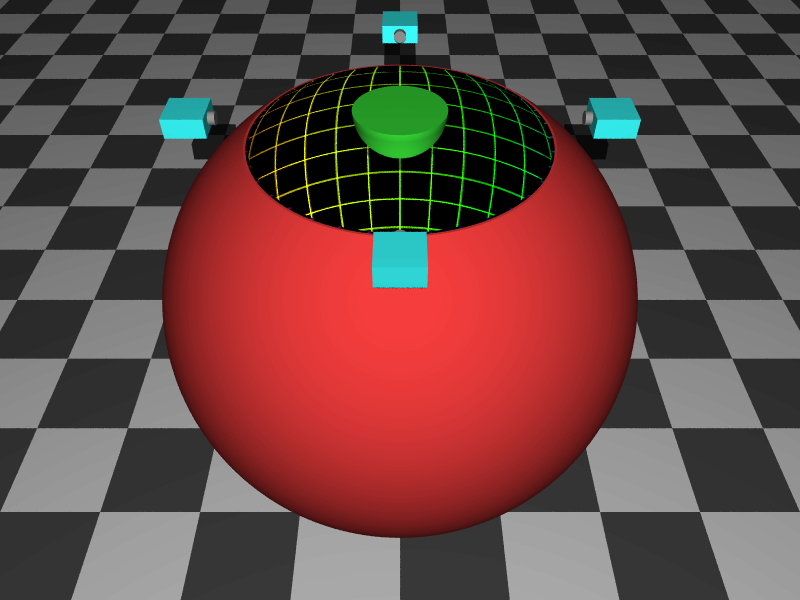
Image map
The natural image projection is a spherical projection, the following
test pattern is used in the above (interior surface) and will be used
to illustrate warping and edge blending in what follows. Note this is a
spherical projection of a polar map showing lines of latitude and
longitude.
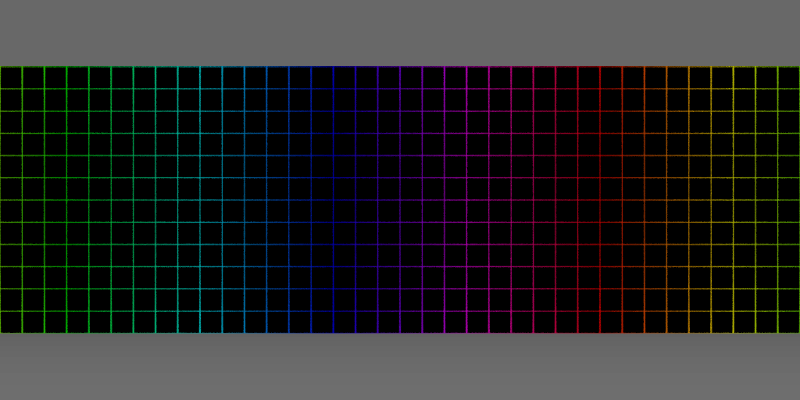
Image warping
In order to see the type of image distortion required one can place
a virtual camera in the position of each projector and with identical
frustums (taking account of throw distance, aspect, offset, etc). The
following is one of the cameras, the white lines frame each 90 section
of the sphere (and the equator) and outline the region that each
projector is required to cover. While the projected image can extend
all the way to the top and bottom of the frame, some extra image is
required on the left and right hand sides for edge-blending.
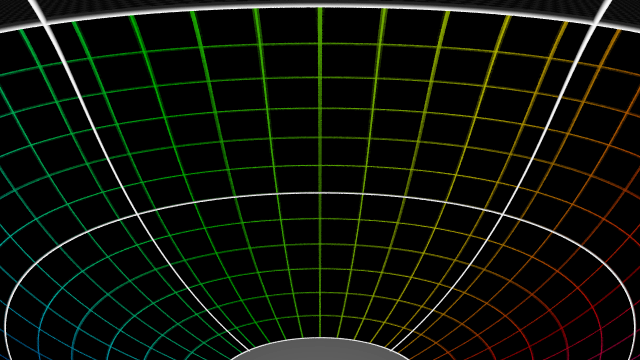
Edge blending
Each 90 degree section needs to be edge-blended with the sections illuminated
by the neighbouring projectors. The edge blend mask is as follows, it is
derived by calculating the warped version of a spherical projection with
vertical edge-blend zones at +-45 degree intervals. The image projected is
multiplied by this mask, the exact transition across the edge-blend zone
needs to take into account the gamma for each r,g,b channel.
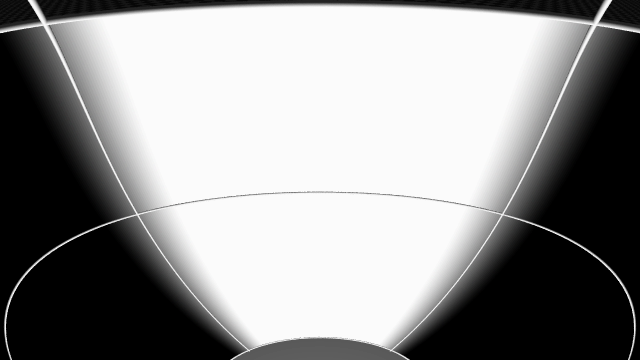
Projected image
The final projected image with edge blending that will give rise to the
test pattern of figure 2 is as follows. Note that a 16:9 aspect (HD) projector
has been used, that aspect ratio is a better fit to spherical warping
than 4:3.

Notes
The design is compatible with stereoscopic projection since the usual
problematic areas at the upper and lower pole are not projected.
In the current proposed configuration each projector would be 1920x1080 and
on average (about the equator) this would result is about 4300 pixels around
the sphere. This is about 3mm square pixels viewed from 2m, or about
5 arc minutes. This is roughly the same as a 2m wide flat screen illuminated
with a XGA projector and viewed from 2.3m away. The resolution increases in the
upper half of the sphere and decreases in the lower half.
The exact dimensions of the sphere are not important, the entire system
scales with sphere radius.
Going to 6 projectors swings the advantage back to 4:3 aspect projectors.
Example
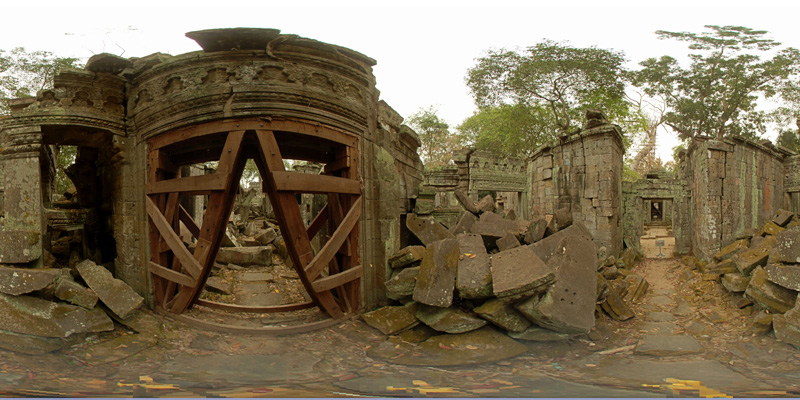
Spherical map: Angkor, Cambodia.
Courtesy Sarah Kenderdine, Museum Victoria
Each of the 4 projected images with the edge blending added
are shown on the right.
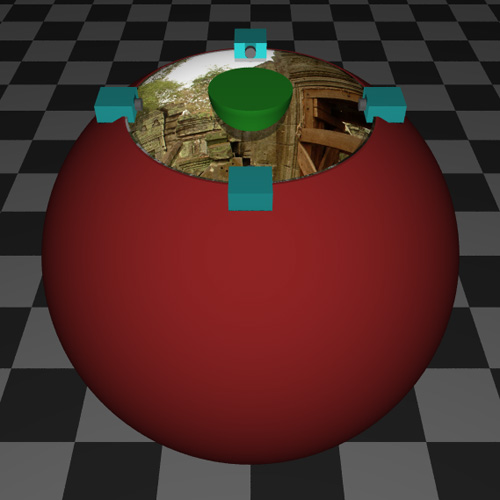
|
|
Mouse HMD
October 2011
A three projector solution is proposed as a trade-off between the final resolution on the dome and the overall system complexity.
Following based upon the InFocus IN5108, an SXGA+ (1400x1050) projector that supports vertical lens shift (symmetric frustums simplify geometry correction and edge-blending). Throw is 1.8:1, aspect ratio 3x4 (projectors mounted sideways). Lower cost XGA (1024x768) projectors could be substituted for a lower resolution effect.!
Estimated average of 10 pixels per degree.
Three projectors can be achieved with a single head graphics card and a Matrox triple-head-2-go unit.

Improved coverage at the north pole can be achieved by raising the projectors above the midline and compensating by either using the horizontal lens shift and/or rotating the projectors downwards. This is at the expense of less coverage at the south pole.
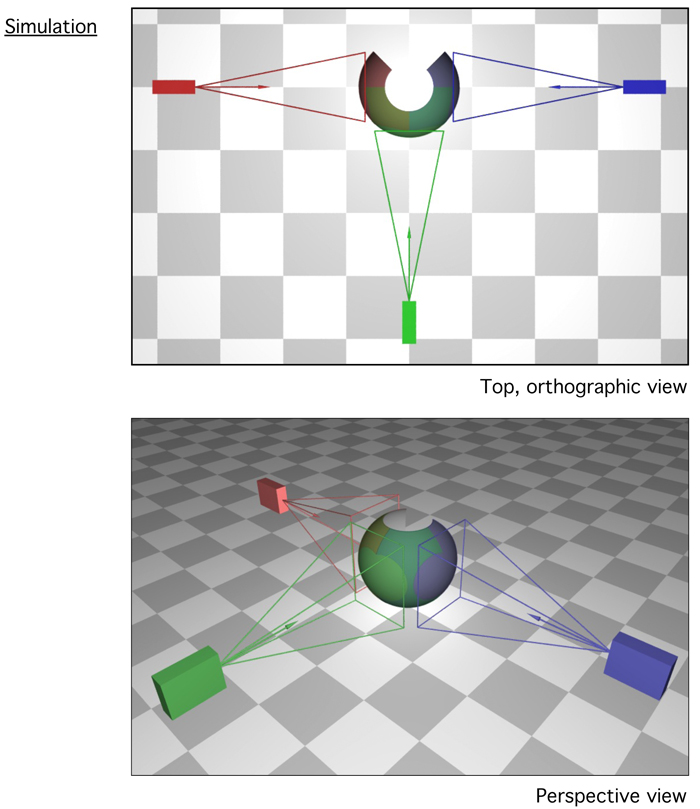
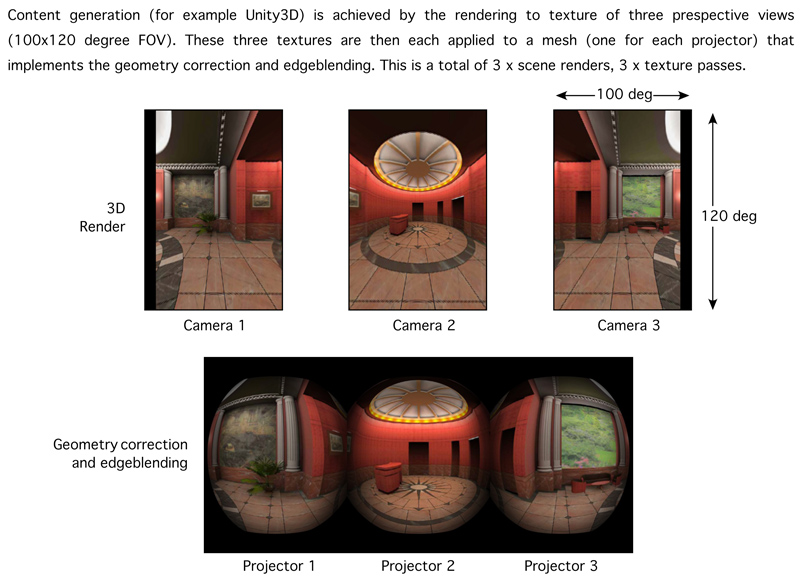
Mouse HMD PDF poster
|